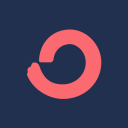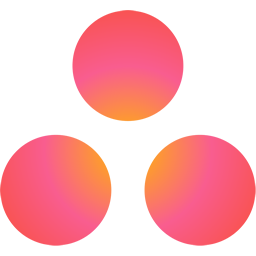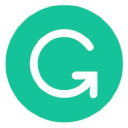How I Built A Business Helping Micro Businesses Find New Clients
Note: This business is no longer running. It was started in 2019 and ended in 2024. Reason for closure: Shut down.
Hello! Who are you and what business did you start?
Hi guys! I’m Bryn Bonino and I founded the Bryn Elizabeth Co. I help micro-businesses connect with their ideal clients. My main goal is to help small and creative service businesses get set up with a digital system that will make the most of their ad spend and get the most distance out of their organic marketing efforts.
All of my clients start with a Foundational Planning Session where I uncover strategies and tactics to help them zoom in on how to make their ideal clients say “wow!” My flagship product is called the Digital System Plus. This is where I build the system that I proposed in the Foundational Planning Session. This often includes creative content and backend technology to create and capture warm leads.
I recently shifted from working as a tactic-based hourly consultant to someone who offers entire packages to help my clients meet their business goals. Since this shift, I have been averaging $1,300 per month and I have a lot more flexibility to spend on marketing my business. Other positive signs that I’m headed in the right direction are that my email list and social media analytics are growing. I also have an increasing number of people booking discovery calls with me.

What's your backstory and how did you come up with the idea?
This is my third run at working as an independent marketing consultant. The first time was in 2009 when I passionately co-founded a business consultancy to help Projeto Morrinho, an art program in Rio de Janeiro. I was the marketing person, and this gave me tons of experience in working with remote teams. I also cut my teeth on all things digital marketing - SEO, content creation, social media marketing, and email marketing.

But I wanted to be able to empower my clients more instead of doing everything for them. So next I started working as a marketing coach for creative micro-business owners. I would identify the tactics and strategies that could get them more traffic to their websites and better ROI on ad spend. Then I would train and coach them on how to carry out these strategies themselves.
I liked working closely with my clients. But I witnessed their anxiety and struggles to carry out these strategies. This is why I built my current hybrid model. I build a strategic and tactical digital marketing system for my clients. Then I train them on how to use the system. I also offer a variety of packages for ongoing support.
I have a business degree and professional certifications in content strategy, social media marketing, SEO, and search advertising. So I knew that I could offer a holistic approach. This differentiates me from a lot of other marketing consultants who lead their conversations with a specific tactic and not with a goal.
I validated my idea by first doing a competitive analysis by posing as my ideal client. Then I started side hustling while I had a salaried job. I decided to go all-in with this idea when for an entire year I was able to charge four times the hourly rate that my salaried job gave me and I was getting more work than I could handle on nights and weekends.
I had also been running into a lot of challenges in life that told me that I needed a change. In a 9-month period, I was laid off from one job, was rear-ended twice, and got an abscess over two teeth. I figured I needed to drastically change course in order to do what I am meant to do.
The final push came from one solo trip through Portugal and Italy where I kept meeting people who were about two steps ahead of me in their own entrepreneurial journeys and they all encouraged me to work for myself. I wrote about this experience in my blog post titled Listen To The Stories And Find Your Muse.

Take us through the process of designing, prototyping, and manufacturing your first product.
My first step was to put myself in the head of my own ideal client. I thought of what stressors, fears, and needs they have. Then I thought of what kind of questions I would need to ask them in order to understand their business goals and how they could get there.
I’m a planner, and that quality helps me out a lot. But I learned that it saves time and energy to launch something before it’s perfect, sometimes even when others tell you not to.
Initially, I designed a Website Workup to be the first step for every client to work with me. This included an interview that got to the heart of their business, a competitive analysis, and a digital content audit. This would allow me to propose all the necessary strategies and tactics.

But when I introduced my product to my professional network, I found that the name did not communicate the value of what I do. So now I call it a Foundational Planning Session and the very first step that all clients take is to do a Brain Pick Interview. After this name change, things started going better for me.

I also focused my initial efforts in setting up my own automated marketing system. I first set up my product offering on my website and installed a Facebook pixel and Google Analytics. Then I set up Facebook and Instagram accounts with the same handle as my website URL. I started pushing out my most valuable content to these two accounts. Then when I had enough data collected, I leveraged the pixel to get more of the right eyes on my products and helpful content.
Some of the helpful content on my website is downloadable guides. When people download a guide, I welcome them with an automated “get to know me” email sequence, more helpful content, and tweetable copy.
In order to build this kind of system, use heavily leverage some tech tools. I use Squarespace, Converkit, Calendly, Click To Tweet, Boomerang, and Many Chat. This all costs me $1,130 per year. This technology allows me to operate very efficiently and the low price of each tool means that in less than three months of business, I’ve already covered these expenses for a year.
Describe the process of launching the business.
Once I had my website updated with my new value proposition, I softly announced this change on Facebook and LinkedIn with image posts and videos. I also started attending local small business networking events. I could tell if my website copy and networking pitch had the effect I wanted by the kinds of questions I was asked and how much attention I was getting.
I learned a few things early on. The first was that I shouldn’t follow generally “start-up” advice and do a simple landing page to get interest. When I had a simpler and slimmed down web design, this didn’t differentiate me enough from fly-by-night marauders.
From all my previous experience, I have a lot of blog posts and guides that I had hidden on my website. So, I brought my best content to my home page. I then fleshed out more blog posts to tell my story in a series of personal stories. Each of us has something unique to offer others and I’m using my own stories to illuminate my own uniqueness.
I also got proof that you can never underestimate the value of personal connections. I made a list of 100 people that I’ve known and worked with in the past. I reconnected with them and told them what I had been up to. That led to a lot of “catching up” phone conversation, and then to my first few clients.
Since launch, what has worked to attract and retain customers?
Soon after I registered my business, I started leveraging video to talk directly to my prospects. I first publish these on Facebook, then they are slowly dripped to Instagram and LinkedIn. These platforms push this content to more people because of how the algorithms are set up. Also, people like seeing and hearing the “real me”. The videos authentically show who they would be working with if they went with me. I also talk to larger human themes and not specific tactics. I think this connects with people better.

I also take an active role in networking and prospecting. I find people on LinkedIn and Instagram who work in a similar space as me, and I reach out to see if they want to have a 20-minute speed networking call. This is how I build a professional network of people with unique experiences that make them great referral partners.
I also leverage Facebook groups to answer people’s questions whenever they ask about marketing their small business. The goal here is to be super helpful so that they will think of me next time there is a digital marketing question.
When people work with me, I give a personalized touch and follow up with them. I am able to do this relatively stress-free because I thought out my process before I took on any clients. This allowed me to write templates that would make my process quicker. And because I have these prepared templates, I can inspire confidence about my process.
How are you doing today and what does the future look like?
I think the future looks bright! I’m not spending anything on ads right now, but I’m getting an average of one new email subscriber a day through the strategies I discussed above.
My average website visitor spends five minutes on my site. So this tells me they like my content and check out who I am. In less than three months and with little ad spend, I’ve gotten nearly 400 Instagram and Facebook followers, and some of my videos have over 100 views.
Creating valuable content for your ideal clients is extremely important. But you don’t have to do that on your own platform. When first starting out, spend your time guest blogging for other publications and linking back to your own website or landing page.
Going forward I plan on using advanced Facebook marketing tactics to get more people talking about my business. This will include marketing through Messenger and running contests to get more people to engage with my Facebook and Instagram content.
I also plan on guest blogging and getting on podcasts to get the attention of my ideal clients. I have already made a list of who to contact and now I need to start reaching out to them.
I think my current products are a good fit for my target population, and allow me to work with any client in any geographic location. But I also want to offer branding photography packages. In addition to being a marketer, I’m also a photographer. So I plan on offering local clients here in Austin headshots and business branding sessions. A portfolio for that style is soon to come!

Through starting the business, have you learned anything particularly helpful or advantageous?
I’m a planner, and that quality helps me out a lot. But I learned that it saves time and energy to launch something before it’s perfect, sometimes even when others tell you not to. I spent a lot of time thinking of snazzy names for my products, but I quickly learned people responded better when they could envision what I did. So I simplified my product names and conversations got easier.
I recommend keeping a diversified marketing strategy for your business - always. In my networking, I’ve met too many people who have put their proverbial eggs in one basket and then after a year or two, that one source dries up and they are back to the drawing board.
I also learned that when starting out, go with a limited budget ads platform. I recommend Facebook for this because you can upload a list of email addresses and leverage a Facebook pixel to remarket to people who already know you and like you. These are the people who are most likely to reshare your content and drive up your engagement. They are also those who are most likely to give you the feedback that you need. I say this because someone convinced me that it was a good idea to run Yelps ads early on. Well, it wasn’t, and that was a valuable lesson.
I’m also very thankful that several years ago I started networking with like-minded professionals who I met through social media. I have a regular strategy for keeping track of my professional contacts in a spreadsheet to help me be sure that I regularly follow up with them. This has helped in launching Bryn Elizabeth Co. As I mentioned earlier, these people gave me my first referrals and have been my first clients.
What platform/tools do you use for your business?
I could not have this business model if it weren’t for my fascination with what tech tools can do for us. Below I’ve made a list of my top 10 tools and why I use them.
Convertkit is an email marketing platform that makes list building and automation relatively easy. I personally do not like receiving marketing emails, so I wanted an option that would allow prospects to choose what kind of email content they got from me. This is easy to do with Convertkit.
Squarespace is a website builder that empowers their users with clean designs and an easy-to-use, yet powerful platform. I built my websites here and have been so much happier since switching over from other platforms. Whenever I build a website for a client, I use Squarespace because they have an extensive knowledge base for problem-solving.
Calendly is a scheduling tool that integrates with your online calendar. When an appointment is booked, you can set it up to send a calendar event, a text reminder, an email reminder, and an email follow up. This makes live conversation so much easier to schedule.
Many Chat is an alternative to the email marketing that I said I wasn’t a fan of. From my own marketing experience, people are becoming less enthused about signing up for email lists, and open rates are usually pretty low. But Many Chat lets you grow your Facebook messenger rates, which you can gamify and get upwards of 80% open rates. Wow is exactly what I think when I see this!
Click To Tweet is a web app that lets you make any text tweetable. *This is important because Twitter is a conversational platform that lets you connect with prospects and referral partners. You can embed *Click To Tweet text in any digital product, from a blog post to a PDF document, and this gets your readers sharing your content with their followers.
Grammarly is a browser extension that checks your spelling and grammar anywhere that you write online. For my own marketing, and for my clients, I create a lot of content. I hate typoes, so Grammarly gives me the added protection so that I will have a product that I can be proud of.
Asana is an online project management tool. Working for myself, I need to be extremely organized in prioritizing all that I have on my plate. Especially in these early stages, managing my workload is crucial. Asana makes it easy for me to schedule one-off and recurring tasks by the project so that I can wear a lot of hats and still sleep easy at night.
Boomerang Gmail is a plugin that allows me to schedule email, and it gives me automatic reminders for when people have either not opened, clicked on a link, or replied to my email within a certain amount of time. This makes it easy for me to follow up with leads and prospects in a natural and conversational way.
Mozbar is a browser extension that allows me to view the meta description, markups, and page authority of any website. This allows me to easily recommend next steps for SEO. I do this when working with a client and to impress prospects so they sign up to work with me.
Builtwith is a browser extension that lets me see what technology is used to build a website. I use this so I can get a feel for who built the website and why. Sometimes I also learn that two different platforms are being used for one website. This background knowledge allows me to understand what a source of frustration may be for a prospect and I can address that pain point in early conversations with them.
What have been the most influential books, podcasts, or other resources?
I was one of those kids and young adults who read for pleasure every single day. These days I still always carry a book with me, but now they are on my phone. So, when I was gearing up to quit my salaried job and start this business, I dove into several books. I’ve listed them below.
Badass Your Brand book and bootcamp by Pia Silva.
All of this material gave me the direction, focus, and confidence that I was building an offering and a business that would be valuable to my target market. Silva’s recommendations and process also gave me confidence that I was leveraging my skills in a way that I would be happy working.
The Artist’s Way book by Julia Cameron and local meetup.
Over the years, I found that I had strayed so far from my creative mind and authentic self. I knew that I’d need to be able to access both of these to offer a product people would want and so I could be a person that people would want to hire. I am currently working my way through this book and program with a small group of women here in Austin. We support each other along the way. At the time of this writing, I’m in Chapter 4, and it’s already doing wonders for me!
The Art of Nonconformity book by Chris Guillebeau.
A few months before I started Bryn Elizabeth Co., I went to a book talk by Gillebeau here in Austin, and it was thoroughly inspiring. I decided to read this book because I realized the author was living a nonconformity life, and I wanted to as well. This encouraged me to build a business that would make me happy because he and so many others had done this before me.
When To Jump book and podcast by Mike Lewis.
Through a fast friend I made at the above-mentioned book talk, I learned of this book and podcast. Lewis quit his corporate job to pursue a dream of being a professional squash player. Along the journey, he met others who had made similar leaps. He found a pattern to successful “jumps” and this material showcases the people who have successfully jumped and how they did it.
All Marketers Tell Stories by Seth Godin.
This is a book I refer to quite freely when talking to others about how to build a business image that people will pay attention to. Did you know that you can get more clients if you double your prices? Remember that you find your ideal clients by being authentically you, and consistently showing up. These are some of the messages that I loved reading about by Godin.
Start With Why by Simon Sinek.
When you build a brand, you need to make sure you make a human connection that others will emotionally connect with. This is often done through images and metaphors because “the why” exists in a part of our brain where language doesn’t exist. And this is why people can’t always articulate why they love a brand. But they love the brand because they personally identify with it. This book got me super excited about the field that I’m in for it’s potential to inspire others.
Art Marketing Podcast by Art Storefronts.
This podcast is specifically for marketing fine art. But the host, Patrick Shanahan, is an exuberant and experienced marketer who researches the latest strategies, tactics, and technology. He then tests it with the Art Storefronts team, then writes up case studies that he talks about on this podcast. The examples are all fine artists, but the strategies work with most small businesses.
Advice for other entrepreneurs who want to get started or are just starting out?
I recommend keeping a diversified marketing strategy for your business - always. In my networking, I’ve met too many people who have put their proverbial eggs in one basket and then after a year or two, that one source dries up and they are back to the drawing board.
I also find that a lot of entrepreneurs just starting out passionately lead with their heart but they don’t think of what they will like doing that will give them the lifestyle they want. I suggest to any entrepreneur starting out to figure out where the overlay is in what you like doing and what you can charge the most for.
Finally, a lot of marketers will stress the importance of blogging. Creating valuable content for your ideal clients is extremely important. But you don’t have to do that on your own platform. When first starting out, spend your time guest blogging for other publications and linking back to your own website or landing page. For example, if I were to write an SEO guide, I could link to this type of opt-in landing page. The downloadable guide subscribers would get has links back to my website and are embedded with Click To Tweet links.
By following all of these strategies you’ll be sure to have a brand that will support you as you grow. You’ll also have a marketing plan that will seem natural and be based on stronger human connections. And you’ll be able to quickly get the attention of other people’s audiences through sharing your knowledge with them.
Are you looking to hire for certain positions right now?
I am always game for partnerships. I’m interested in meeting others who work in the same digital marketing space. More specifically, brand strategists, social media managers, copywriters, graphic designers, and photographers. I’d be super happy if you reached out to me. My contact info and social media are listed below and I check all of them quite regularly.
If you have any comments about anything I’ve written here, I’d appreciate a message. I always welcome a good conversation.
Where can we go to learn more?
If you have any questions or comments, drop a comment below!

Download the report and join our email newsletter packed with business ideas and money-making opportunities, backed by real-life case studies.

Download the report and join our email newsletter packed with business ideas and money-making opportunities, backed by real-life case studies.

Download the report and join our email newsletter packed with business ideas and money-making opportunities, backed by real-life case studies.

Download the report and join our email newsletter packed with business ideas and money-making opportunities, backed by real-life case studies.

Download the report and join our email newsletter packed with business ideas and money-making opportunities, backed by real-life case studies.

Download the report and join our email newsletter packed with business ideas and money-making opportunities, backed by real-life case studies.

Download the report and join our email newsletter packed with business ideas and money-making opportunities, backed by real-life case studies.

Download the report and join our email newsletter packed with business ideas and money-making opportunities, backed by real-life case studies.















